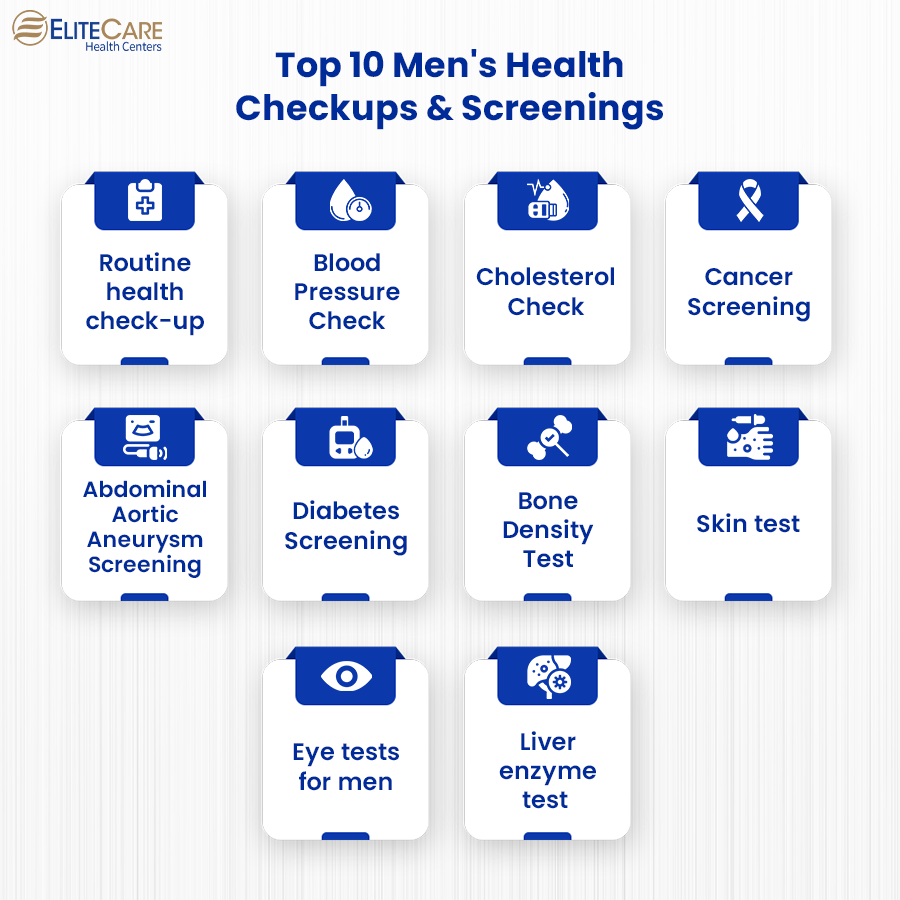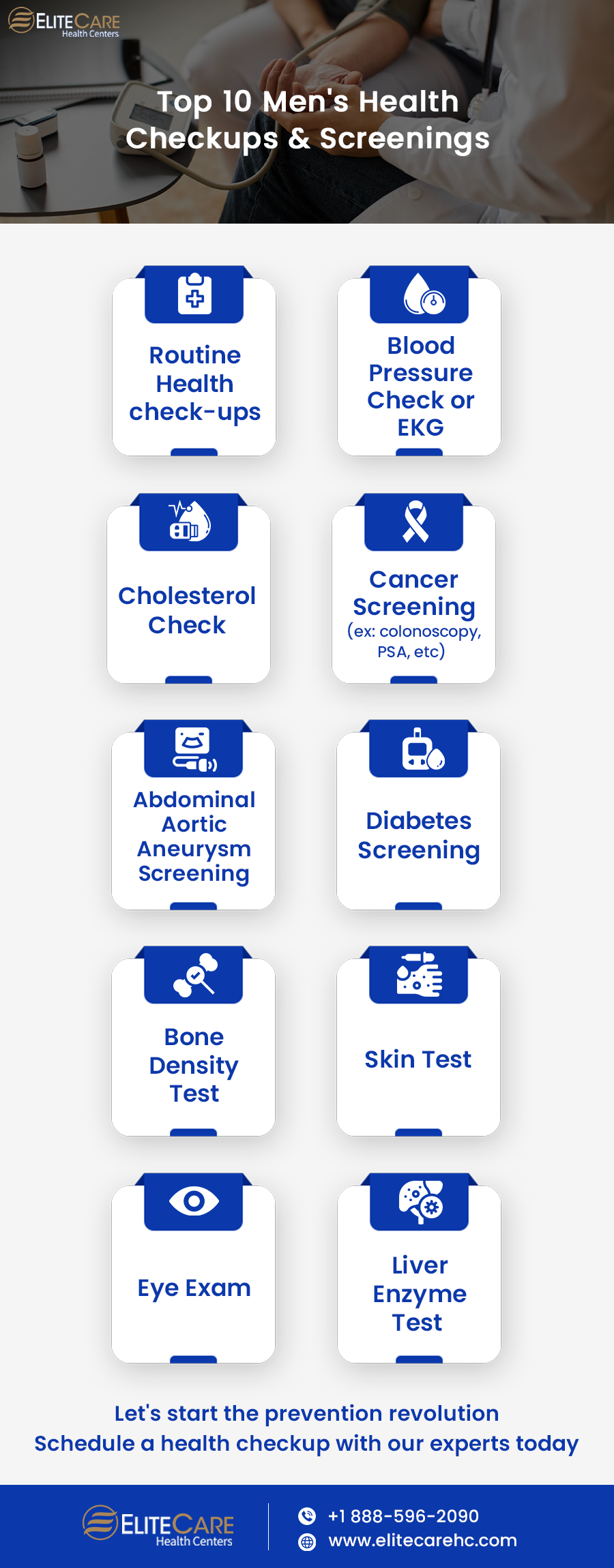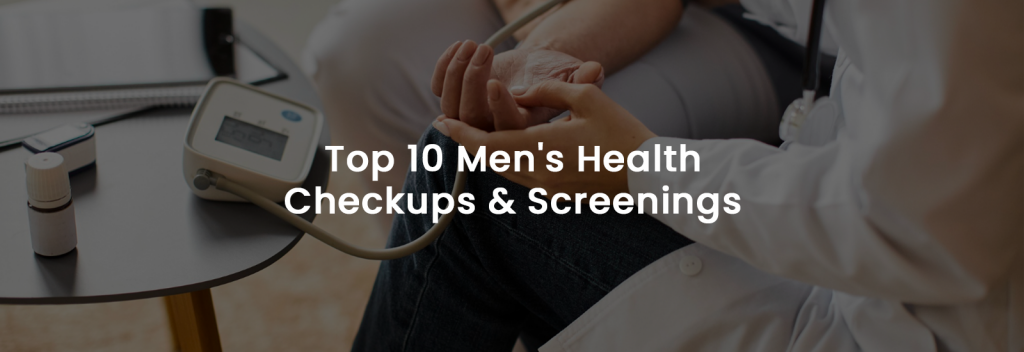
Men are traditionally reluctant to seek medical care even when their health is affected. Compared to women, men are also less likely to visit medical clinics or their healthcare teams for preventative screenings and checkups, according to research. By delaying early diagnosis and treatment, men lower their chances of finding diseases early.
Checkup or Screening?
Checkups help assess the overall health of a person. During a checkup, a doctor examines the patient’s body and discusses any health concerns. Patients can also discuss their symptoms, medicines, and daily routines, including diets and exercise.
Screenings are diagnostic procedures that detect illnesses or problems before a person may experience any symptoms. Blood, urine, or stool tests, as well as X-rays, ultrasounds, and scans are examples of screenings. Doctors use screening tests to ensure that everything is okay or to verify if there is any abnormal development in the body that could lead to a cause for concern, such as early signs of cardiovascular disease, diabetes, and certain malignancies.
To have the best chance at optimal health, here are the top ten screenings and checkups every man should consider.
Health Checklist for Men

1. Routine Health Checkup
A routine examination with the health care provider is an excellent method to confirm health or spot a problem in its early stages. During these physicals, vital indicators like heart rate and blood pressure are noted. These figures may be crucial in estimating the future risk of developing heart or circulation issues. Men over 50 should get a physical checkup annually, while men under 50 should get one every three to five years.
2. Blood Pressure Check
3. Cholesterol Check
High cholesterol levels can cause heart disease, strokes, and diabetes. A routine blood test known as a fasting blood lipid panel measures the levels of triglycerides, LDL “bad” cholesterol, HDL “good” cholesterol, and total cholesterol (blood fat). Although individuals with a greater risk factor should start testing at age 20, men require routine cholesterol testing starting at age 35.
4. Cancer Screening
Cancer is the second leading cause of death in the U.S. after heart disease. Men over 40 are more prone to developing several malignancies, including prostate, colorectal, pancreatic, and liver cancers. For these tumors to be successfully treated, early detection is crucial. Delays in diagnosis can cause cancer to spread to various body parts, which makes treatment extremely difficult. These cancers can be successfully treated if discovered early. For all males over 40, the cancer screening package is a must.
Men over 50 should consider prostate cancer screening with either a digital rectal examination or a PSA blood test. Long-term smokers require a lung CT scan depending on their age to check for early- stage lung cancer.
5. Abdominal Aortic Aneurysm Screening
According to the CDC, about 59% of all deaths due to an aortic aneurysm happen among men. Smoking increases the odds of developing this disease and men above 65 years of age with a history of smoking must consider a single abdominal aortic aneurysm ultrasound screening. Consider routine screening if the person is over 60 with a family history of abdominal aortic aneurysms.
Read more: How Often Do I Need Blood Work
6. Diabetes Screening
A diabetes test examines glucose or blood sugar levels. High blood sugar levels can be a sign of diabetes or prediabetes, which increases the chance of acquiring the disease.
According to the American Diabetes Association, men over 45 years of age should get a diabetes test every three years. Diabetic screening involves a blood test that identifies the average level of blood sugar over the past three months.
Most common types of blood tests for diabetes are as follows:
A1c Test
A doctor can ascertain the body’s blood sugar levels by blood testing. Fasting is not necessary for the A1C test and the results estimate blood sugar levels over time. Red blood cells have a lifespan of around three months, thus the A1C test measures the average blood sugar over that time.
Random blood sugar test
The test reveals how much glucose or sugar is circulating in a person’s blood without considering the time he/she ate.
Postprandial Glucose
A postprandial plasma glucose test monitors blood glucose levels after a meal that contains a specific amount of carbohydrates. The test indicates how well the body tolerates glucose.
Fasting blood sugar test
In order to perform a fasting blood sugar test, the person must go without food for at least eight to twelve hours prior to having the blood drawn.
7. Bone Density Test
Bone mass is measured using a bone density test. The only test to identify osteoporosis is a measurement of bone mass, which also indicates bone strength. The bones become weak, fragile, and more likely to shatter when osteoporosis is diagnosed. Dual-energy X-ray absorptiometry (DEXA) scans are a typical method for determining bone density.
Medical professionals advise males to get a bone density test around age 70. Men with rheumatoid arthritis, a family history of osteoporosis, or fractures might want to undergo a bone density test even if they are below the age of 70.
8. Skin Screening
Men who have a history of skin cancer in their families or who have suffered severe sunburns as children are more likely to get the disease. Non-melanoma basal cell and squamous cell skin cancers are three times more common in men than in women. It is more common in older men, than women of the same age to contract lethal melanoma skin cancer.
Regularly inspect the skin for strange moles or freckles, and keep an eye out for any changes in the color, size, or form of any existing spots. Consult a doctor, if anything abnormal is found.
9. Eye Exams
With age, eyesight often deteriorates. Men over 60 should get an eye exam annually since serious eye problems such as glaucoma, cataracts, diabetic retinopathy, and macular degeneration become increasingly prevalent with advancing age. Men with a family history of eye disease, or certain medical conditions such as high blood pressure or diabetes, or smoking, should visit an optometrist and be tested more than once a year.
10. Liver Enzyme Test
Standard blood work includes liver enzyme testing, which checks for any liver damage that may result from a variety of factors, including alcohol consumption.
How Much Does an Annual Physical Exam Near Me Cost?
A physical examination is a preventative treatment and is often 100% covered by Medicaid and some Medicare Advantage plans. Without insurance, the cost of physicals varies, but a visit to the doctor typically ranges from $70 to $250. These expenses do not cover immunizations, prescription drugs, or any testing requested during your physical checkup.
Summing up
Undergoing annual health checkups or screenings can turn out to be crucial in the long run and can help prevent an array of unwanted complications. Stay proactive about health concerns and seek assistance without delay or hesitation. For any queries or concerns over seniors’ health, contact EliteCare HC, one of the finest medical clinics in Florida. Schedule an appointment for our senior care services or primary services today.






